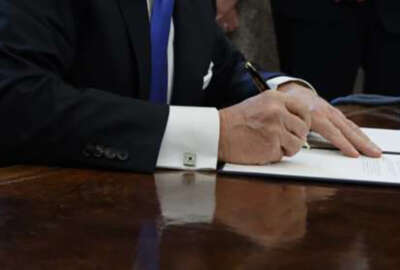

Are federal employee unions going to see a surge, or even a modest/steady rise, in membership after four years under President Trump as some people predict?
For decades, unions representing federal civil servants — especially those in Defense, the VA, IRS and Social Security — have been looking for a champion. Or a super nightmare that would scare more non-members into the union fold. And lots more members. Ideally it would be a charismatic leader or team of organizers who would get frugal federal workers to join an organization obligated to help them improve pay, working conditions, benefits etc. Or a “monster” that would do the same thing. Bottom line, stores need customers, professionals need clients and unions need dues-paying members. People that would help finance union efforts to improve their pay and working conditions. Postal unions had great success in part because the giant agency is divided on craft lines. Most clerks and letter carriers, the largest groups of workers, hold a union card. But in the rest of government, a majority of workers don’t belong to or pay dues to any union.
While the unions traditionally hoped for a charismatic politician — JFK, Bill Clinton or even Barack Obama — to champion their cause, they often had more luck, as in results, with people like Richard Nixon or George W. Bush. Nixon won the reelection endorsement of the presidents of two major federal unions: the American Federation of Government Employees and the National Association of Letter Carriers. Bush (the first) with his wide experience in government, reached out to top level career bureaucrats and won many of them over.
But yet still after decades of effort, recruiting and political attacks, most rank-and-file civil servants still don’t belong to any union. But has four years of President Donald Trump changed that?
Unions continued to recruit during the Trump years, but despite their best efforts, there has been no surge in dues-paying members. All unions “represent” more workers than are actually members. The union surge hasn’t happened — yet — despite the fact that the administration repeatedly attacked their competence (CDC and NIH), loyalty, or patriotism (State, FBI, CIA, Interior). This week it was reported on efforts by EPA employees and career officials to delay certain actions ordered by the White House.
And that’s a problem. And not just for the union which is legally/technically obligated to spend as much time, effort and money representing a non-member in the bargaining unit as it does representing a dues-paying member. Technically anyhow.
While a federal union with 300,000 dues-paying members can say it “represents” 700,000 or 800,000 employees in a press release or at a political rally, most people who count know the real numbers.
With the exception of AFGE’s Border Patrol Council, the leaders of most federal and postal unions endorsed Hillary Clinton over Mr. Trump in 2016. Before that they endorsed other Democratic candidates for president and almost exclusively for Congress too. One Northern Virginia Republican who was a good friend of feds complained in private that at least one federal union helped him out each election, but under condition that nobody knew it.
So what, if anything, is next for federal unions? For the past four years they’ve seen their contracts challenged and their government supplied office space cutback or eliminated. And several agencies were in the process of dismantling teleworking programs until the pandemic hit. At a time when many industries are shrinking, government is growing. This could be a golden moment for unions.
The White House this week — after earlier proposing a 1% federal pay raise for 2021 — has since gone along with a GOP House plan to freeze pay next year.
Are federal employee unions going to see a surge, or even a modest/steady rise, in membership as some people predict? Or will the majority of non-postal workers — many of whom supported the president — remain content being “represented” by a union while skipping the membership dues part of the deal?
By Alazar Moges
For four years in a row, Bangkok was the most-visited city in the world with about 22.8 million visitors reported in the annual rankings by MasterCard Inc. Then followed by Paris, London and Dubai.
Source: Reuters
Copyright © 2025 Federal News Network. All rights reserved. This website is not intended for users located within the European Economic Area.
Mike Causey is senior correspondent for Federal News Network and writes his daily Federal Report column on federal employees’ pay, benefits and retirement.
Follow @mcauseyWFED


